► Remembering April 2005 collapse of MG Rover
► BL guru Keith Adams mulls over what happened
► The legacy – and what might have been…
I wasn’t at Longbridge on 8 April 2005 when the administrators were called in at MG Rover Group. But I was watching closely from the sidelines. I had so many friends who worked there on speed dial – and remember their shock when they found out that PriceWaterhouse Cooper had been called in via an off-the-cuff comment made on TV by then Trade Secretary Patricia Hewitt.
I’d been there the week before, tape recorder in hand, sat around the boardroom table in the Longbridge ‘Kremlin’ building and speaking to some of the engineers about past projects. They were still clinging to hope for MG Rover – just. Even then, the mood was bleak. They knew what was coming. We all did. The firm was running on borrowed time, and no financial miracle was forthcoming.
The following weekend, I returned – this time not as a journalist, but as a car enthusiast. Alongside thousands of owners, fans and locals, I stood outside Q Gate and watched as a procession of MGs and Rovers filed past the gates for the final time. There was pride in the air, certainly – a celebration of what had been achieved over the past century. But mostly, there was loss. Palpable, gut-wrenching loss.
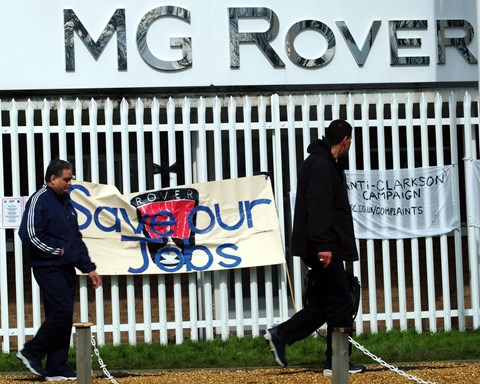
Two decades on, that moment will always linger with me.
How MG Rover failed in April 2005
The closure of MG Rover Group wasn’t just the end of a company. It was the final curtain for Britain’s last native mass-market car maker that built cars for everyone. A century of heritage, absorbed into the ether in a matter of weeks. Longbridge, once a powerhouse of the Midlands known as ‘The Orstin’, a community hub employing tens of thousands, had been silenced. A few final complete knockdown (CKD) kits would be assembled later – but that was the beginning of a new chapter.
What’s interesting is that the British car industry didn’t die with the end of MG Rover Group. In fact, in terms of output, Jaguar Land Rover and Mini have romped to huge commercial success in recent years, matching or even surpassing the peaks of British Leyland. We still build world-class cars here – just not for domestically owned companies.
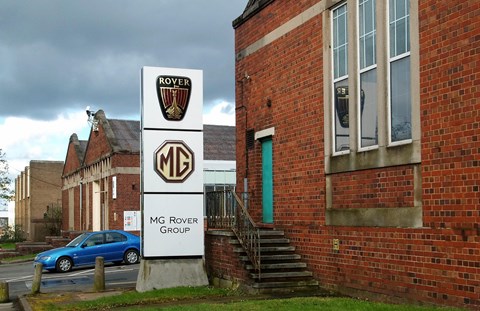
And MG? MG is alive. Thriving, even…
China’s SAIC Motor swooped on the bones of MG Rover. Instead of buying the whole operation, it acquired the brand and the intellectual property rights to the engineering know-how. It played the long game – and it’s clear now that SAIC never wished to manufacture in high-cost Britain.
Two decades on, MG has quietly become one of Britain’s fastest-growing car brands under SAIC ownership – on paper, at least. The MG4 EV is sharp-looking, drives well and represents great value for money. You can’t help but be impressed – heck, I made it the Parkers Car of The Year in 2024. But you also can’t help but reflect on the irony. MG, the name once associated with Abingdon, the MGB, and Longbridge’s ASBO-fuelled Z-cars, now adorns vehicles built thousands of miles away.
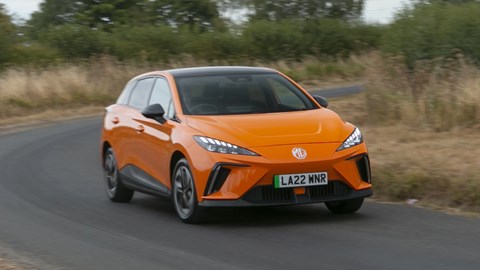
It begs the question: if MG Rover had clung on just a little longer, if the right partner had emerged, if the cards had fallen differently – could the badge on the front of the MG4 EV still mean what it used to?
We’ll never know.
MG in 2025: what next
And now, in 2025, we find ourselves standing on another precipice. The global economy is in turmoil. Politics are turning inward. Protectionism is back in fashion, especially under President Trump’s radical weltpolitik and imposition of auto industry tariffs. Electric vehicles are no longer the promise of tomorrow but the mandate of today – and the British car industry is scrambling to catch up.
Factories are being retooled. Supply chains are shifting. Billions are being spent on gigafactories and battery tech. And yet, it all feels… fragile. The sense of momentum that carried MG and Rover through the optimistic early 2000s – with their brash advertising, affordable saloons, and Phoenix-badged hopes – has been replaced by cautious conservatism.
That’s where Longbridge feels so out of step with today. The plant belongs to another world. A world of people-first manufacturing, of burgundy-and-grey Rover-branded overalls and hands-on model development. It’s hard to picture the spirit of MG Rover RDX60 (the abandoned Rover 45 replacement, below) surviving in today’s cut-throat, electrified, brand-conscious industry.
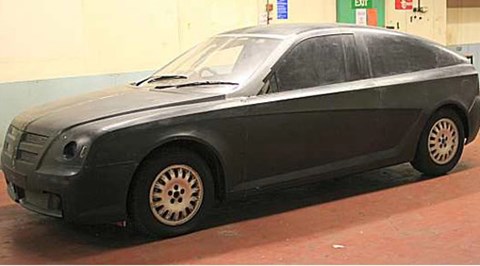
And yet, I think MG Rover might have thrived had things been different.
Why MG Rover and the British car industry was brimming with innovation
Because Longbridge, even in its dying days, brimmed with ingenuity. Forget the management – that was usually rubbish. The engineers and designers, though, were brilliant. Those I met were candid, yes – some morose, some cynical – but they were super-talented and still believed in making something better out of not quite enough resources. There was passion, skill, and a certain swagger that could have produced something genuinely radical in a parallel universe.
What if MG Rover Group had stayed the course? I ask myself that question a lot. What if the Rover RDX60 had made it through to the next generation? What if the ZT and 75 had been given the updates and development they so clearly deserved? And what if the Midlands had received the EV investment instead of Oxford or Sunderland? But again – we’ll never know.
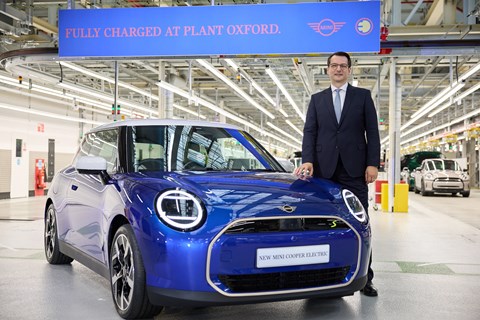
Today, MG is reborn, but unrecognisable. Mini (above) is BMW’s premium-honed baby. Jaguar Land Rover is Indian-owned, and brilliant at understanding its customers. And Longbridge is mostly new-build. The British car industry exists, but it wears different clothes, speaks softly and with authority in global boardrooms, design studios, and engineering centres – and runs on someone else’s timeline.
Twenty years on, we haven’t forgotten what we lost. But perhaps we’re only now starting to understand what it might have meant – and what it could have been.